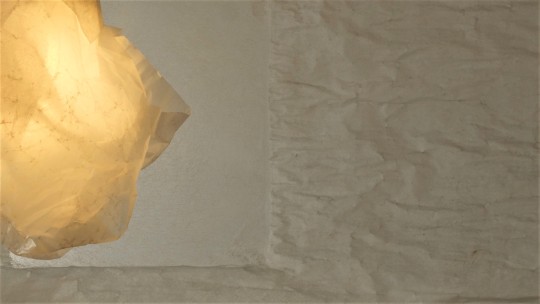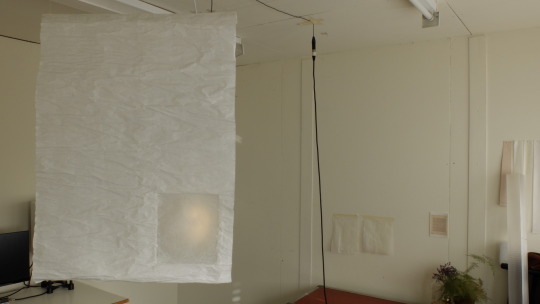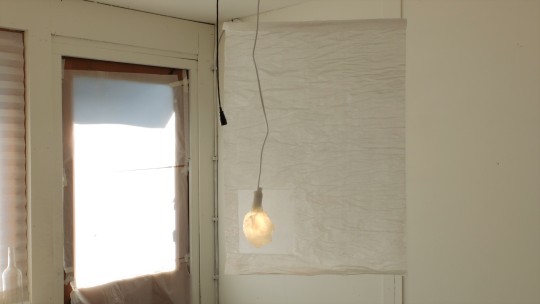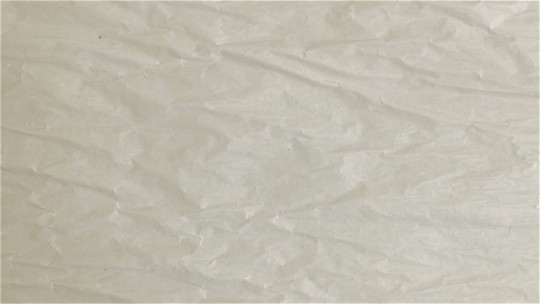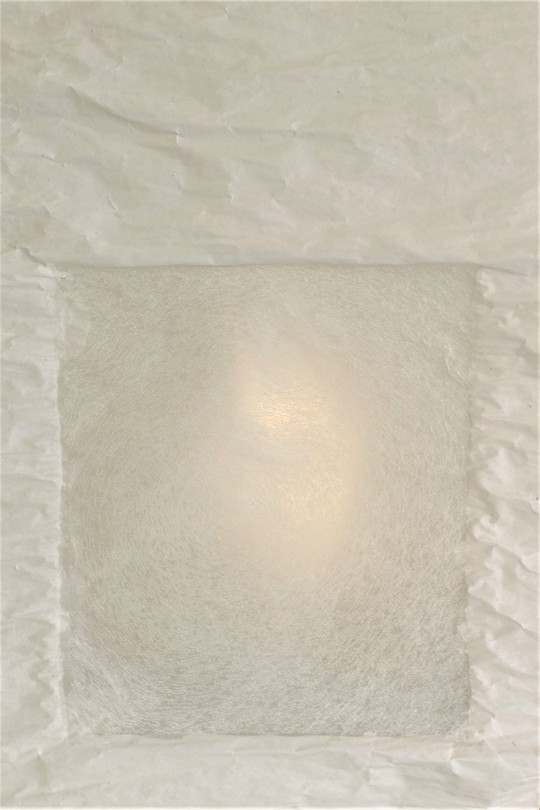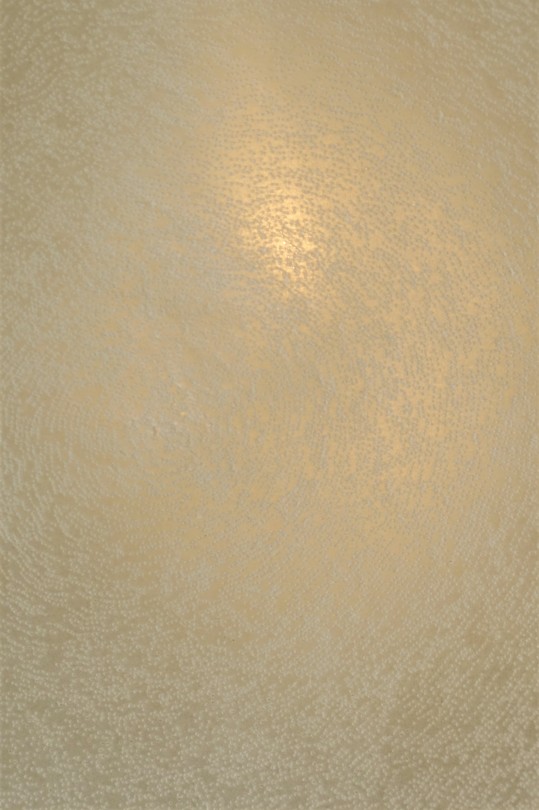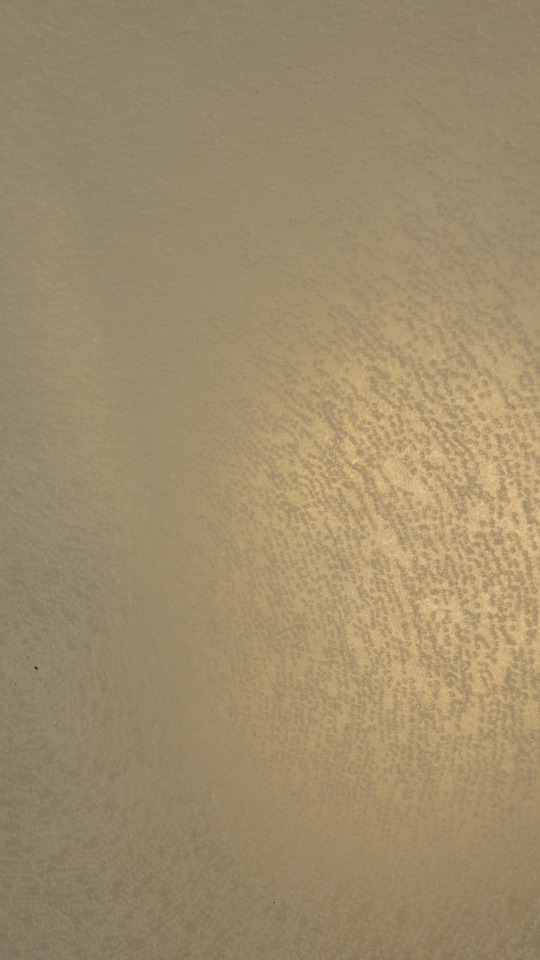Don't wanna be here? Send us removal request.
Audio
Listen/purchase: Cym_Bowl by Günter Müller
Günter plays on David Toop’s album Sound Body
1 note
·
View note
Link
David Toop’s reflections on paper in improvisation
‘More recently I began to use paper, fascinated by a strangeness that we take for granted. Flexibility, porosity, strength, a gleaming like the white marsupial. Reading, it might be said, is listening to paper. I scratched paper, wrote on it, treated it as a drum skin, thought of it as human or animal skin that could be responsive to touch and emit sounds. A book held open, illuminated by the drama of candlelight calls upon fire, warmth, the sound of breathing, a miracle of light in sooty darkness, words rising up like birds of gold, silver and precious stones.
Using tight compression I crumpled paper close to microphones, allowing it to unfold slowly as if giving up a contained secret, its faint crackle fading with the gradually easing elasticity. There was a world in there, close to what we hear when we are alone and silent, nothing stirring, without movement, minds drifting and open. Is it possible to share this micro-world, as listeners collective yet separate? I tried; failed. I tried again; failed. I will try again.’
0 notes
Text
Look at the cypress tree in the courtyard!
‘[...] extricate the student from the world of ideas and put him in the world of living reality. Look at the cypress tree in the courtyard! Look at the cypress tree in the courtyard!’
Thich Nhat Hahn, The Pocket Thich Nhat Hahn. p. 90
0 notes
Text
Bruno Duplant interview with Another Timbre for Next to Nothing (and how he doesn’t read music, took piano lessons very late and learned double bass at 40)
Although I have been playing instruments all of my adult life, I veered away from formal music training on bass guitar around the age of 19 to focus on mkaing music in “my” way. For the entirity of the sound arts BA at LCC i’ve struggled with not have a foundational practice to develop new processes from. I’ve seen how almost every artist I am drawn to has a fairly traditional practice that they have developed from to create more experimental work. I play piano almost every day and plan to take lessons, drawing as well, but reading how Duplant started very late (as I am 36) is really inspiring, and especially as he can create graphic and text scores and share and collaborate with others with them. I’d like to try my own graphic scores after the course is over.
Can you tell us a bit about your own background in music? When did you start playing, and how did you come to experimental music?
I started playing music quite late; I took some piano lessons about ten years ago in order to be able to play Satie and Monk. However, thanks to a number of LPs and cassettes, I had discovered adventurous music very early – some jazz (Miles, Coltrane, Mingus, Monk, Coleman etc…) as well as composers such as Cage and Feldman. Then some time later, with the help of an old PC and some software (transformed from its original function), I experienced the joys of creating my first experimental compositions (to the great distress of my neighbours!) In fact I have always been interested in transforming musical objects, for instance, taking an instrument and using it in ways that are different from those for which it was originally intended, thus taking it into new territories, as I also do today with field recordings.
It’s great that you started music late and yet haven’t let that inhibit you or hold you back, and now compose and play several instruments. There must be many people – like myself! - who keep telling themselves that it’s too late to start and so never do anything. Nonetheless, do you sometimes find it frustrating that, for example, you don’t have the dexterity as an instrumentalist that you would if you’d started younger? Or, conversely, do you think that there are advantages in starting late?
Both. Firstly I think it’s a great advantage, because, once you take the plunge, you don’t feel there are any real barriers to what you can play or create. So, for example, I began playing double bass at 40. Also, because I started as an adult, I haven’t come out of any group or school. But on the other hand, I am sometimes really frustrated, not by the lack of dexterity (which I certainly do not have), but by not being able to compose or play a ‘real’ score (though I am certainly not the only one in this case). So I have to invent my own solutions again and again. But I still have dreams, like playing viola da gamba.
http://www.anothertimbre.com/nexttonothing.html
0 notes
Link
Ryoko Akama, Sculpture a Day project with Yorkshire Sculpture International (2020)
'This week we challenged our 2019 Associate Artist, Ryoko Akama, to take on #asculptureaday.'
"I'm fascinated by found, used or mundane objects that no one's interested in or takes any notice of any more and assemblage them into a minimalistic sculpture. During the quarantine I started an instagram account just to start A Sculpture a Day project. I like fragility and subtelty and the relationship between objects. I've been exploring materials that I've never used before, as well as familiar ones. So, I'm going to use the wall today and a cardboard box [...] I like using the heaight and thinking of the width as well.”
0 notes
Video
youtube
Seiji Morimoto live at Quiet Cue Berlin
Things as they are in experimental music improvisation
Morimoto exploring all of the sonic possibilities of what I think is mini vibration motors and various tiny cases / cans. What I love about this is not so much the intense noise element, but the simplicity in choosing just one device and observing its behaviour with different materials, esepcially in that the materials are malleable, changeable in their form. The acoustic properties of them are shifted and re-expressed with the introduction or removal of other vessels as if to have a constantly changing micro-ecology. Yanagi’s description of seeing things as they are in The Beauty of Everyday Objects (which is essentially the central Buddhist perspective practicing the Dharma (or, reality / truth); the teachings of the Buddha which penetrate delusion to see things-as-they-are and liberate one from their own suffering) can be understood in Morimoto’s approach and the approach of many Japanese artists that I am drawn to such as Ryoko Akama, Sachiko M, Toshimaru Nakamura and many more. It is the allowing the thing to be as it is and to observe in intrigue. This observation is also central to Akio Suzuki’s practice as mentioned in the previous post; becoming one with nature through listening.
0 notes
Video
tumblr
Conversation with Tania Chen about her use of paper in improvisation 01.06.2020
During my final tutorial with Ingrid Plum for my major project I showed her my improvisation experiment using glassing paper, two transducers and a tiny directional mic. I had encased the paper around the devices so that, as the microphone was amplified by the transducers to the point of nearly feeding back, the uncrumpling of the paper around the microphone manifest as feedback, and popping clicking sounds. For me it was about the paper trying to recover its form, in the same way that the salt crystalising of the glassine paper in the was a way of natural process transform a human industrial process of an organic material - glassine. Ingrid described a performance that Tania did with Fred Frith in New York where she crumpled tissue paper and placed it on the strings on a piano. I thought this sounded very beautiful but couldn't find any text, sound or video documentation of it so I began a conversation with her on Facebook:
Me: Hi Tania, you probably might not remember me but I was one of the LCC performers from David's workshops that played at his Flutter Echo launch at cafe Oto last year. I just wanted to ask a question about a performance of yours that my supervisor for my final project at LCC Ingrid Plum told me about. I've been working a lot (in both installation and improvisation) with glassine paper, surface transducers and feedback and especially the encasing of those devices in the paper to allow them to unfold. I find this process very beautiful as a metaphor of fragility, impermanence, uncertainty and letting-go. It requires so much presence to find the space in between volatility and harmony whilst letting the material be as it is. Ingrid said that she remembered a performance of your's where you crumpled tissue paper and let it unfold/relax on piano strings? I'd love to know more about that performance and even better if you have a link to a recording? I think Ingrid said it was in New York with Fred Frith... Thank you for reading, I hope that's not too much to ask! Doran
Tania: Hi Doran, I will hav a look for the video, i dont know if that show was filmed...i will take a look... If it is helpful however, i have an alternative video which is definitely online, it's on the Issue Project Room website and I'm using paper there, but not on the piano It's a video of my show with David Toop at Issue Project Room
Me: I'm actually just watching that performance now from Issue Project Space so i’m happy i'm on the right track. Totally fine if you don't have time, but I wondered what interested you about using paper in improvisation?
Tania: At the end of our show i am waving paper around Using air I am really into air Happy to share thoughts on paper with you! I brainstormed paper idea with david and going to play it live on my livestream show Noise is Good soon
Me: Ahh this is great! And I'd love to hear more about your paper brainstorm. I'm going to have a talk with David too so it's really nice to see you have already shared this in performance and conversation. Thank you thank you!
Tania: We brainstormed an entirely new piece with paper yesterday With paper and his words written on it which I will tear up and make into the liner notes of an album, we discussed multiple ways of tearing up. And i will speak some of the words
Me: That sounds really interesting. So the writing will be about paper? And is there a significance to the different ways of tearing?
Tania then sent some voice messages which I’ve transcribed:
‘Hi Doran, so this is the story about the new paper piece. David Toop played on an album that I made, John Cage Electronic Music for Piano, and he also wrote the liner notes. So, I decided to release the studio sessions recently and I asked him whether I could use his program notes and he said "yeah, sure", and I said 'well... what do you think, do you wanna change it or anything?' he said "why don't you randomly just make the whole thing indeterminate?". And, he and I thouhgt that was a good idea beacause the original studio sessions were all mixed up and randomly and indeterminately put together for the final recording. I said to David 'how do you feel if I write all your wordsof the original liner notes down on some paper and then I tear it up, I break it, I tear it all up and randomly assemble it together?'. And then I said 'but, what about if I was to perform this as a live piece, I could perform it as a live piece on my noise show Noise is Good...?' That's the show that I do every two to three weeks on Facebook and I put the videos up on Instagram... But he said "yeah, but how would you tear it up? You know, you'd have to think of a process..."And I said, 'yeah, I've got a good idea for a process...' so I'm gonna tear the paper up in three or four different ways...
In order to make the new program notes or liner notes for this album I'm gonna make a new piece because I'm gonna tear up the paper with David's words on them, assemble it all together live in a completely random way, tear up the paper so it makes all these different sounds... tear up the paper in several different ways... I have actually thought about how I'm going to do it. This is what I was talking about when I told you about this new piece. I'm probably going to be playing it live this Sunday... if I do a show this Sunday... if I don't do a show this Sunday then it will be the following Sunday. It depends on things like it might be that the riots are so bad in New York, I don't wanna do anything on a day when there's loads of riots...
The reading the words bit, will be me reading the words while I'm tearing the paper... and the thing about the way I'm going to tear the paper refers back to... I just realised this... it refers back to the piece that John Cage actually originally had this idea for. Originally Electronic Music for Piano was... it incorporates a piece called Music for Piano. Music for Piano was actually written on paper which... but the notation was based on the crinkles of the paper, the flaws in the paper. So, that's how John Cage actually put together the notation, it was an indeterminate notation. I'm gonna be talking about this on the show and I'm gonna be doing something like that with the tearing, I'm gonna be using some of the tears as a way of looking at indeterminacy...
John Cage looks at indeterminacy and also chance in his composition Music of Changes so I'm kind of referring back to some of his earlier pieces by doing this and I think that's also why David and I were thinking this was a really good idea and it would be a really fun piece to put together and read David's words at the same time. I've had some further thoughts about movement in relation to... the kinds of actions that I would make in order to... while I'm tearing the paper and after I tear the paper Its' like one thing to start tearing it and it's the another thing as to how you out the paper down, and the placement of it. So, how does the paper fall? Do you place the paper down? Do you let it float? Those are the things I've been thinking about.’
Tania was very generous with her time and happy to help, which I felt really grateful for. What I found interesting about her description of her conversation with David is the importance he placed on creating a process with regards to her gestures in tearing the paper. I have found the arbitrary playing with objects in improvisation sometimes a bit perculiar. Without purpose other than exploring the sonic qualities of an object (which, for me, takes you far from the purpose of the object itself), it feels like a fetishism. To have a reason to engage with something and a meaning in the way you do so suddenly provides purpose.
0 notes
Text
The Balloon of the Mind W. B. Yeats - 1865-1939
Hands, do what you're bid:
Bring the balloon of the mind
That bellies and drags in the wind Into its narrow shed.
0 notes
Text
Being ‘silently spoken to’ - me, David Toop and Soetsu Yanagi
Whilst washing up on a very warm early summer’s Sunday morning, the drying rack becomes full and, as usual, I place the glasses on the work surface next to it. I sit and compose a heart felt response to someone dear to me who has described their experience of a trip to see their estranged father in Osaka after hearing of his cancer. I chose my words so carefully, like tuning my awareness to my senses in an inside out motion that straddles two hearts in two time zones and the care of what sensations may arise as they read those words. In this careful state, my ears prick up to a relay of delicate ticking with the softest “t” as if pronounced with the middle of the tongue the roof of the mouth and not the hard, sharp damning of air suddenly relased to whistle high and fast across the bottom front teeth (I began to look up the official linguistic term for this but it felt disingenuous and disinteresting-ing). Pitches, rhythms and speeds shift between and seep out of a huddle of variously shaped glasses and jars. I’ve heard this before... I move in closer so that my right ear (the closest ear) can better hear. A ring of bubbles and moisture are frantically queuing to reach a gap between the glass and the surface where the tiniest door from in to out can be found, and then... pop (or, dhtick), gone. Their insistence is a pulse formed on a slow, gentle, miniature wind that is at once hurried but also taking its time. I begin to think of recreating this as part of my improvisation set but, why? Because it expresses the world in motion, the processes in constant process that can only become a temporary dwelling place when the space to see/hear ourselves as part of the world in process has begun to be tended to.
Yesterday I cycled to Greenwhich park to take a break from constantly working in whatever combination of various rooms and the garden (of which these choices are a comparative luxury) in the current lockdown restrictions. As I entered the park I saw a strangely intriguing fir tree that had platform like layers of pines that slunk from the top in steps that reached the grass and continued to grow outward like a lazy hound, melting ice cream, tired cloud or languid fungus. Somehow, it made the other tress look uptight, desperately reaching for the sun... I wanted to take a photo but the park was heaving with other lockdown relief seeking south London inhabitants. I finally found my spot where I could have a good sight of the horizon and the shade of a tree. This tree, I think, was a Lyme tree. Laying back I began to focus on my breath and give my thoughts over to the joyful experience of the swaying, beating, shimmering, twisting, dance of light, shadow and sound through, on and of the translucent, dynamic and multiplicitous leaves of the tree on the wind. The same wind that I felt on my skin, through my hair, doing the same dance of aliveness of that moment. I thought, giving up everything I “know”, everything of life can be understood from a tree... I remembered my father and Angus Carlyle talking about the way trees communicate through their roots and shade one another from the sun from the book The Secret Life of Trees... Satisfied and calm, I eventually began to flick through the copy of David Toop’s autobiography Flutter Echo that my housemate and his friend / collaborator Lucy Stepankova had (with the warmest, kindest heart that shares a way of seeing the world and connecting with his work) had let me borrow. Instantly my experience was brought inline with an experience of David’s;
“This afternoon I was looking at an old tree in Alexandra Park, maybe not so old in tree years but substantial and twisted, beautiful in the flow of subtle colours encircling its bark. I was waiting for a bus but something came from the tree into me. I don’t know what, not in a mystical sense but in understanding, the way a silent thing can speak to you. I read recently that trees communicate with each other in various ways, particularly through their root systems. Whether that means they have self-awareness and so become conscious of their longevity and decline I don’t know, but their stillness is sometimes impressive, when we stop to engage with it [...]’ (Toop, Flutter Echo. 2019,167)
Something coming ‘into’ one when one stops to engage with it...
David wrote this in what he described as a kind of letter that he wrote (but never sent) in 2016 after visiting Sue Steward who he had had a romantic relationship with many years before. The conversations that were shared appear to have moved them both as their experiences, although different, seemed to be emotionally relatable in a way that allowed for honesty to allow vulnerability;
‘Certain subjects otherwise shrouded in secrecy can be exposed to the light, given a propitious moment in a friendship that remains deep and sympathetic, no matter how much turmoil it has weathered.’ (Ibid, 165)
It is not the window into his personal life that I’m pursuing, but that moment of resonance with another - of honesty that is shared sympathetically - sympathetic resonance - that I feel frees the heart into experiencing the world as it is. Without language to determine whether what we see/hear/feel is right or wrong or distinct within a taxonomy or, over-there whilst we are over-here... It is being-with, and may occur through being-with our own pain to be-with the pain of others to see/hear/feel the beauty of the world in process that we, as a process of that world, cannot be dislocated from. Then, something from the tree comes into you. Or, the bubbles, moisture, surface, world in process silently speaks the languageless dance of existence... to those that engage with (the truth of) it (/themselves). The person I write to travelling to see their father in Osaka is a person that I also have shared this sympathy of vulnerability, where the deepest truths have been allowed to arise as a result of individually treading the many painful routes that bring us to the mutual need for a path of honesty, to see/hear/feel things as they are, to resonate sympathetically.
I’d like to close this post with a quote from Soestu Yanagi’s The Beauty of Everyday Objects;
‘While everyone, of course, sees, there are many ways of seeing, so that what is seen is not always the same. What is the proper way to see? In brief, it is to see things as they are. However, very few people possess this purity of sight. That is, such people are not seeing things as they are, but are influenced by preconceptions. “Knowing” has been added to the process of seeing.’
0 notes
Video
vimeo
David Toop feedback and paper crumple
David Toop & Tania Caroline Chen - Flutter Echo, Issue Project Space. September 18th, 2019
I’ve seen David using the lapel mic in his mouth for feedback and remember him telling me about this in the improve workshops he conducted in 2019 but I hadn’t found any performances where he had crumpled paper. It is exactly that encasing of the microphone and transducers that I have been exploring. What’s interesting is that he doesn’t try to hide the aggressive sound of suddenly smothering the microphone in the paper, which I think is not so imposing because the output of the microphone goes to a small guitar amp on stage instead of to the pa. Also, the tissue paper has a softer, more forgiving sound as it unfurls. It makes me think how each type of paper would behave and sound differently in the same context.
This is a link that Ingrid Plum sent to me in our final tutorial after I showed her my improvisation using glassine paper, two surface transducers and a tiny microphone, although the original reference she recommended was a performance where Tania crumpled tissue paper and let it unfold on the strings of a piano. I would really love to see / hear this so i’ve emailed her.
0 notes
Video
vimeo
2 surface transducers, 1 tiny directional mic, paper, salt, feedback improv test
Placing a microphone in crumpled paper and surface transducers either side also in crumpled paper with the sts feedback from the mic. As the microphone paper unfolds from its cocoon its jaunty movements either limit the feedback or change the shape of the paper to change the feedback tone. I really find this process beautiful as it encompasses all of the elements I am working with; intimacy, space, impermanence, uncertainty, fragility, being in-between two positions or trying to find the beauty in between.
The system is delicate and often volatile and so requires extreme attention / affection. There are so many variations of interaction with the paper on each device, of distance, pressure, unfolding...
0 notes
Photo
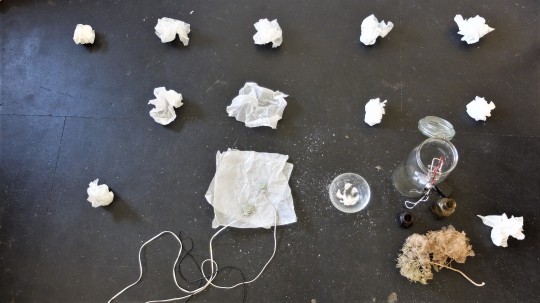
Improv playings with two surface transducers playing no-input mixer into paper with salt, crumpled paper, dc motor and propellor in a big jar and a tiny directional mic
0 notes
Audio
Again, utterly gorgeous. No rushing. Like moving though pure atmosphere without air or people. I find these sounds very affective / intimate - like being invited to listen to the mood of a person without words. The eyes, touch, breath, heartbeat, warmth of skin, facial expression and body language, but not words. It feels like a place of pure emotion. Perhaps because there is almost no presence of air, all interior vibration.
I have always been so moved by the palpability of sine tones in combination but haven’t been able to find the right way to work with them other than two tones at a time with audio-feedback and glass bottles.
0 notes
Audio
This is Akama’s solo track of this collaboration and it us just utterly gorgeous! So fragile and natural. It gives me a feeling of nostalgia for an autumn sunday afternoon with the washing machine on in an artist’s apartment... a similar mood I get from the album Flaming Tunes by Gareth Williams.
0 notes
Audio
Tierce, Caisson released by Another Timbre, August 31, 2019 Jez riley French - field recordings, zither, salt, paper, camera, contact microphones, internal electronics Ivan Palacky - amplified dopleta 180 knitting machine Daniel Jones - turntable, electronics
I came across this on the Another Timbre bandcamp and was surprised to read that Jez Riley French’s set up is very similar to what I have been using. From what I can hear, though, the salt has a contact mic in it and is being stirred and crunch with his fingers. I’m not sure of the paper from this extract, but the pulsing, crunching electronics are from electromagnetic pickups i.e. internalised electronics.
Sonically, it has crossovers with David Toop’s Entities Inertias Faint Beings but, for me, it doesn’t evoke the same spirit.
0 notes
